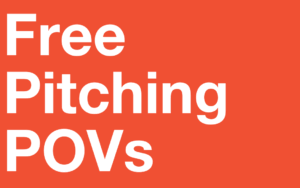Main Content

How to create a business that doesn’t get asked to free pitch
Why is it that some design businesses get dragged into speculative pitches more than others?
Or rather, how do some escape the free pitching trap?
The answer lies in what sets them apart.
I look at a lot of design agencies’ websites and see variations on the same positioning statements repeated business-after-business:
- We are an agency with creativity at our heart
- We work for purpose led brands
- We work for large multinationals and small starts-ups alike
- We work with brave clients
- Our culture sets us apart
Up to the Light’s latest ‘What Clients Think’ report, published in association with the DBA this Spring found that 61% of clients admit to finding it difficult to establish what an agency is best at when looking at their website. When tens of thousands of design businesses take a broad-stroke approach, the problem is that too many agencies look and sound alike.
While these statements might be attempts to keep the new business funnel as wide as possible, in essence what you are saying is that every company is a potential client – and the flip side is that homogeneity works the other way too, creating a sea of sameness in which you are just another design business. When all agencies look and sound alike it creates a problem for some clients: in their eyes there are then only two differentiating factors to choose on:
- price – who is the cheapest?
- and a response to a brief – which creative do we like the best?
Clients will often ask for a free pitch because they cannot tell agencies apart. So how can you avoid being asked in the first place, or effectively rebut the request if you are?
Blair Enns, author of the Win Without Pitching Manifesto, uses the phrase “meaningfully different” to describe how an agency has to appear. Agencies need to differentiate themselves and stand out, because if a client views a group of agencies as indistinguishable, they will have to create a scenario to distinguish them – a creative competition.
What is it about your business that makes you different from the tens of thousands of other design businesses in the UK?
Is it creativity? No – all agencies will say they are creative (although there will always be an elite few who can own this positioning because of their work).
Is it your culture? No – all design businesses will also say they have a great culture (again there will be a select few who are known for having a great culture, but only because theirs is marked apart).
Is it the wide array of client logos on your website? No – unless you can illustrate how your work impacted those businesses in the way the client was aiming. Just having logos on your site is meaningless unless you can back them up with case studies focusing on results.
A good place to start with developing your positioning statement is to look at your parameters:
Who won’t you work with? Cut out all the sectors that are not relevant to you.
What size budgets will you /won’t you work for? Is the cut off £10,000 or £50,000? The structure of your business will dictate what your minimum engagement should be. Simply saying “we usually work on projects with design fees between x and y” will save you a lot of time and wasted effort with businesses who should be fishing in other pools.
Design agencies have a hard time tightening up their own positioning. “You can’t read the label from the inside of the jar,” as David C. Baker says, so having an external perspective is crucial, but essentially you need to do to your business what you do for your clients. Be creative and use your expertise to differentiate your business. Don’t become the cobbler with the barefoot children, as the saying goes. Visit the DBA Experts Register for support from experts who can help you “read the label.”
When clients find it difficult to differentiate agencies, this can be particularly frustrating when they look at a website and cannot easily understand what it is the agency does. 70% of clients prefer a statement on the home page that sums up what the agency is all about, while 56% of clients believe that agency websites lack clarity around the agency’s positioning and offer.
You could consider how to develop a unique positioning statement by starting with the following: “We do X (description of what type of work you do) for Y (descriptor of type of client) in order for them to do Z (the outcomes of your work, the problems you solve).”
Once you have filled in the blanks, see how many other agencies it could be attributed to. How can you be meaningfully different? What is the type of work or client that you feel you deserve to win? What is your sweet spot? This is what needs to be defined.
You usually don’t want to be totally unique – you need some competition to prove that there is a demand for what you are selling. But a handful of competitors is better than several thousand.
Narrowing your focus in how you talk about the business doesn’t necessarily mean you can’t do work outside of that focus – you can! Just don’t let it distract you from describing the type of work or clients you deserve. The work you are best placed to do. The work you can charge a premium for. Describe that and you’ll find the clients who need it. Once they recognise their problems in your solutions, they’ll know you are the agency for them, doing away with the perceived need to run a free pitch.

DBA members regularly and successfully change clients’ understanding of why free pitching won’t deliver the best results and they win their business without taking part in pitches that require unpaid creative work, against agencies that do. It’s how they work. And it gets results. Access our guides and resources to support your response to free pitching requests and help you open up conversations and doors with clients. Access the DBA’s Free Pitching Guides >